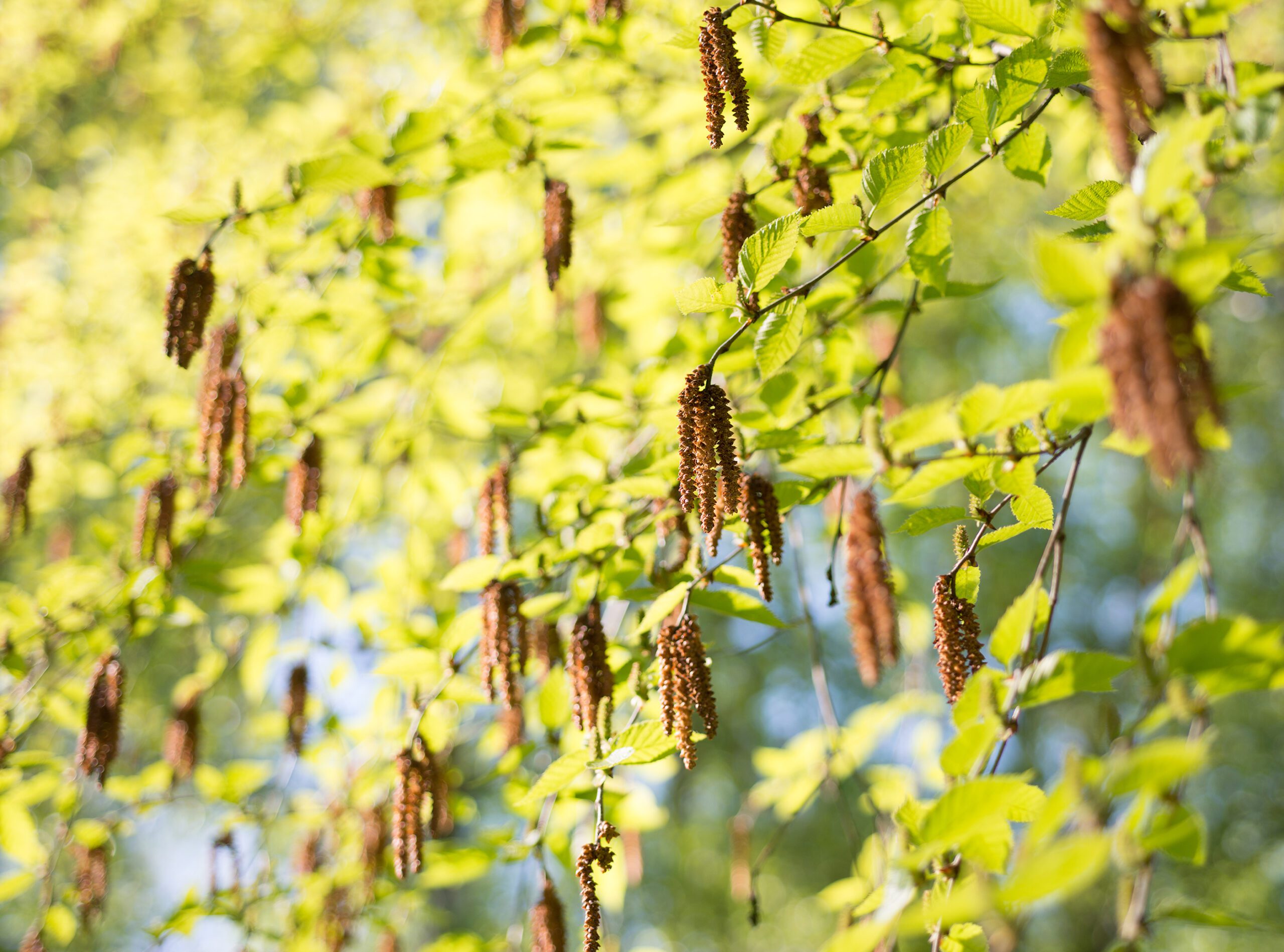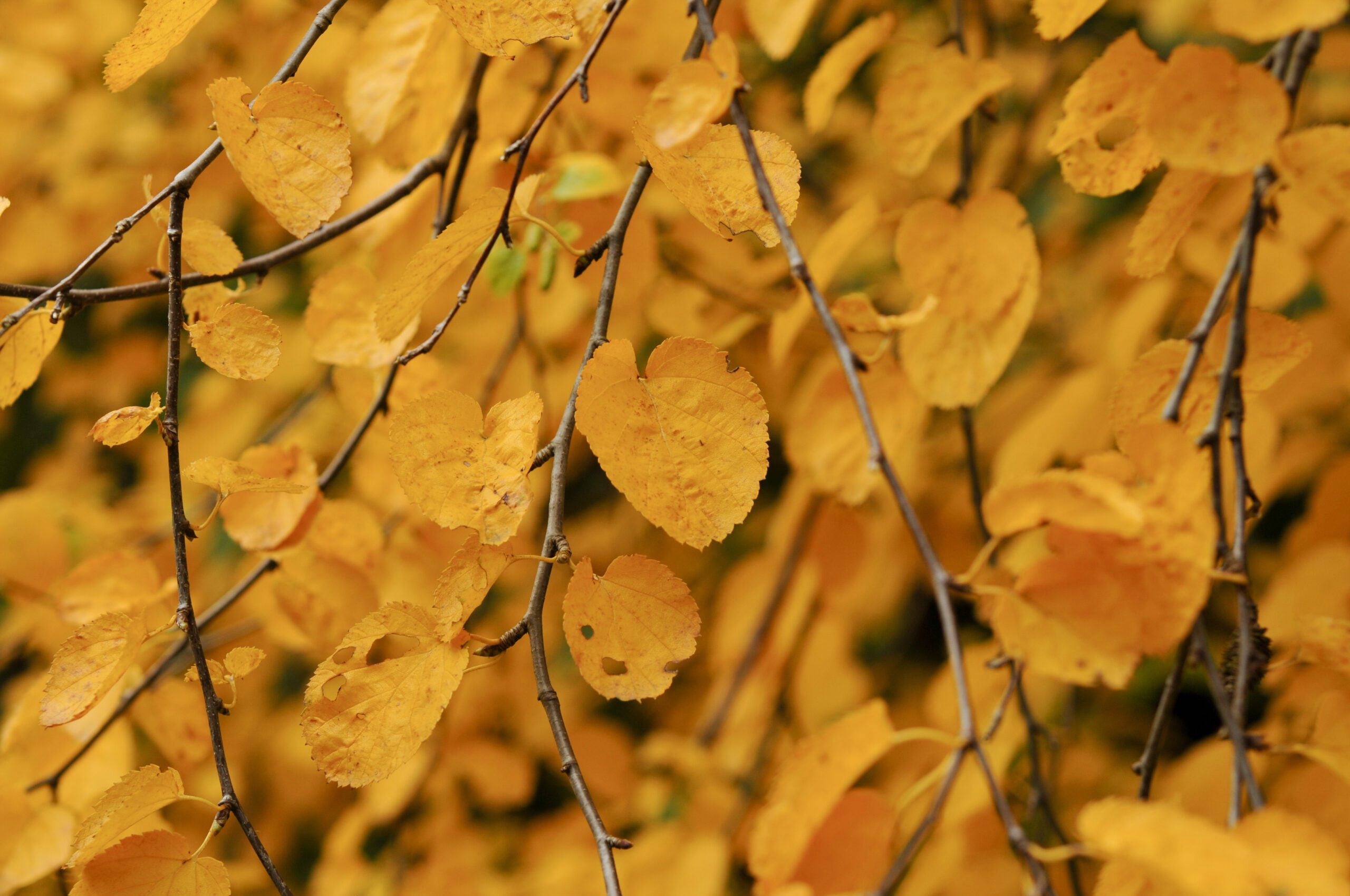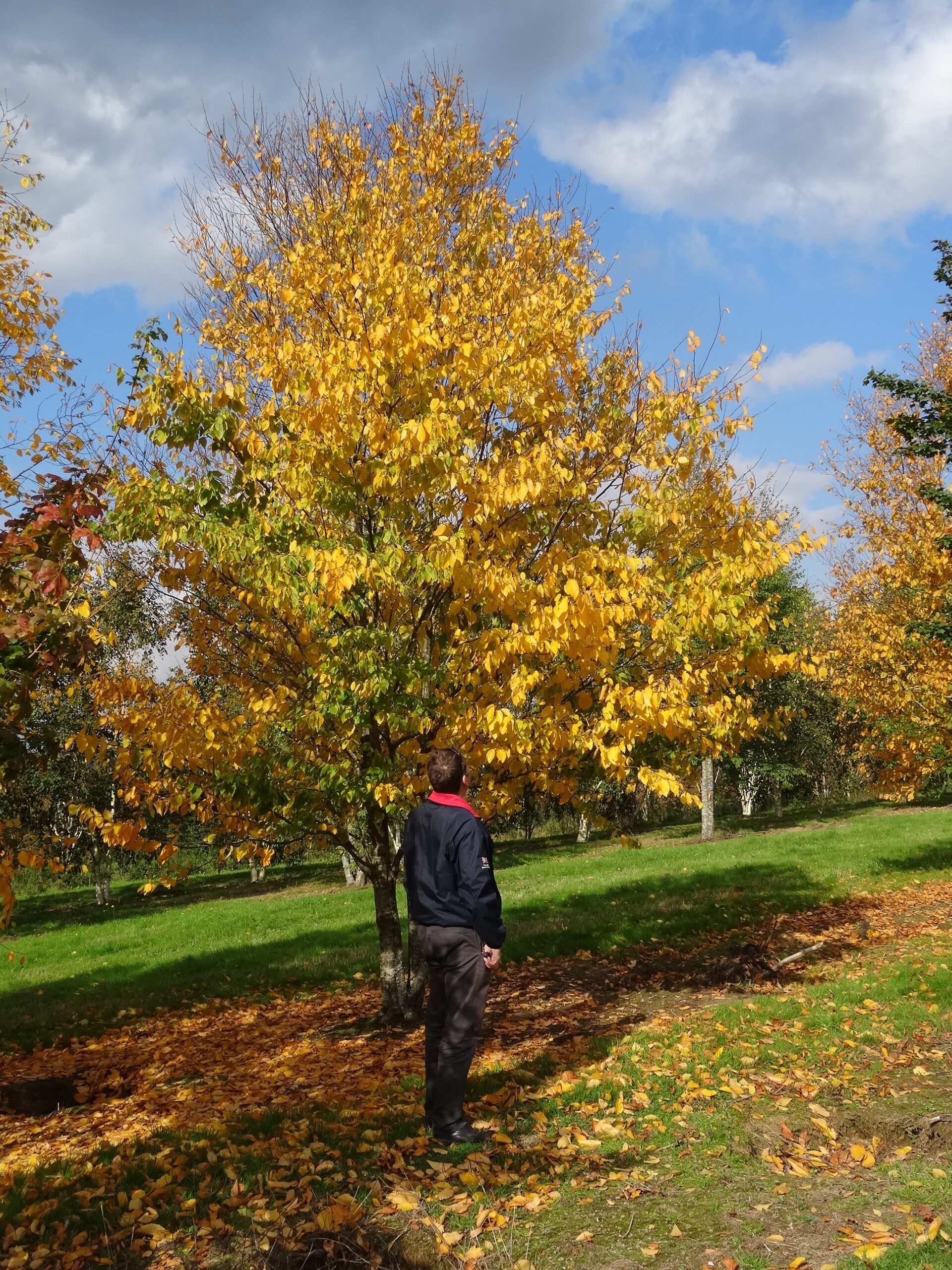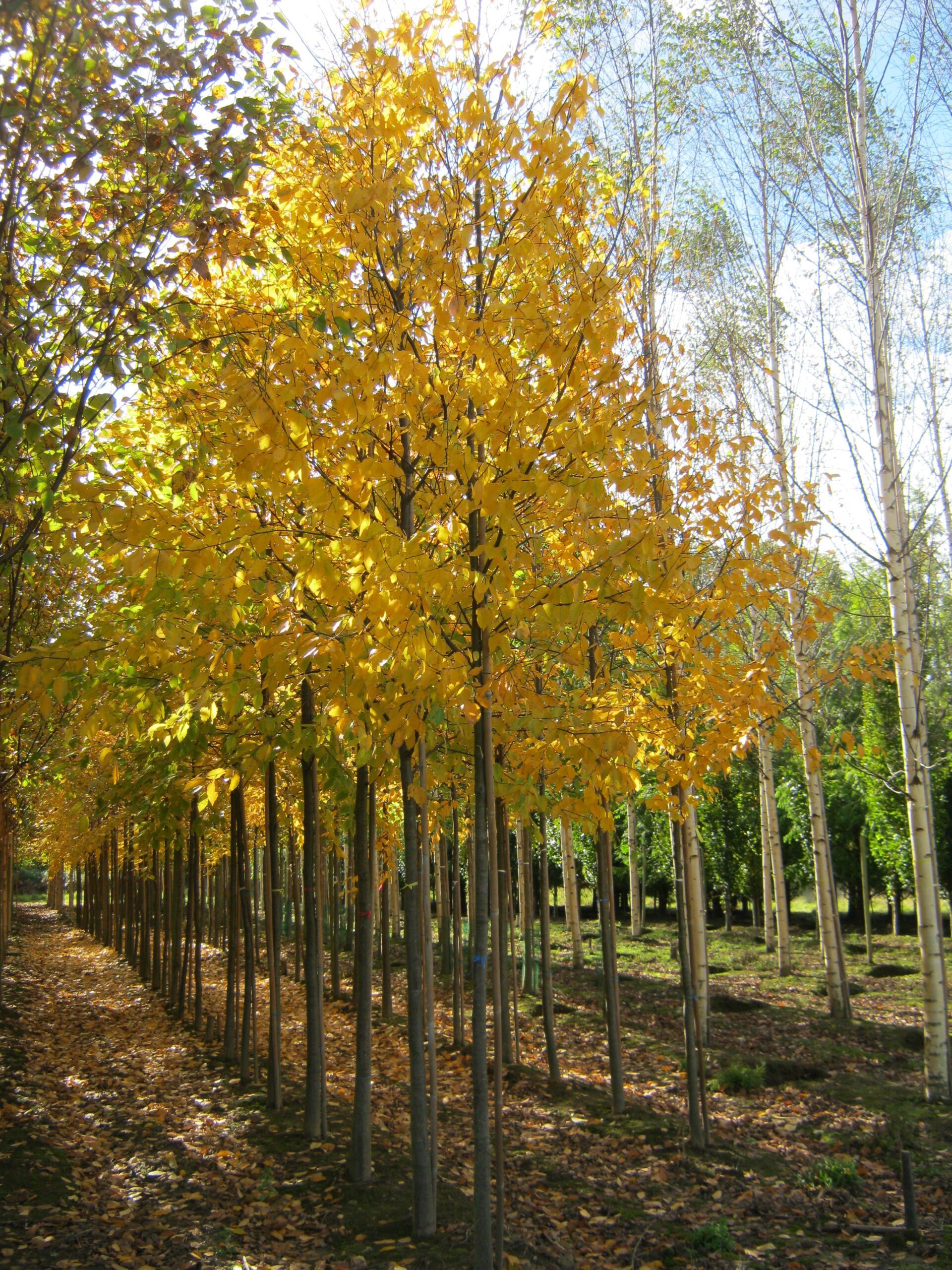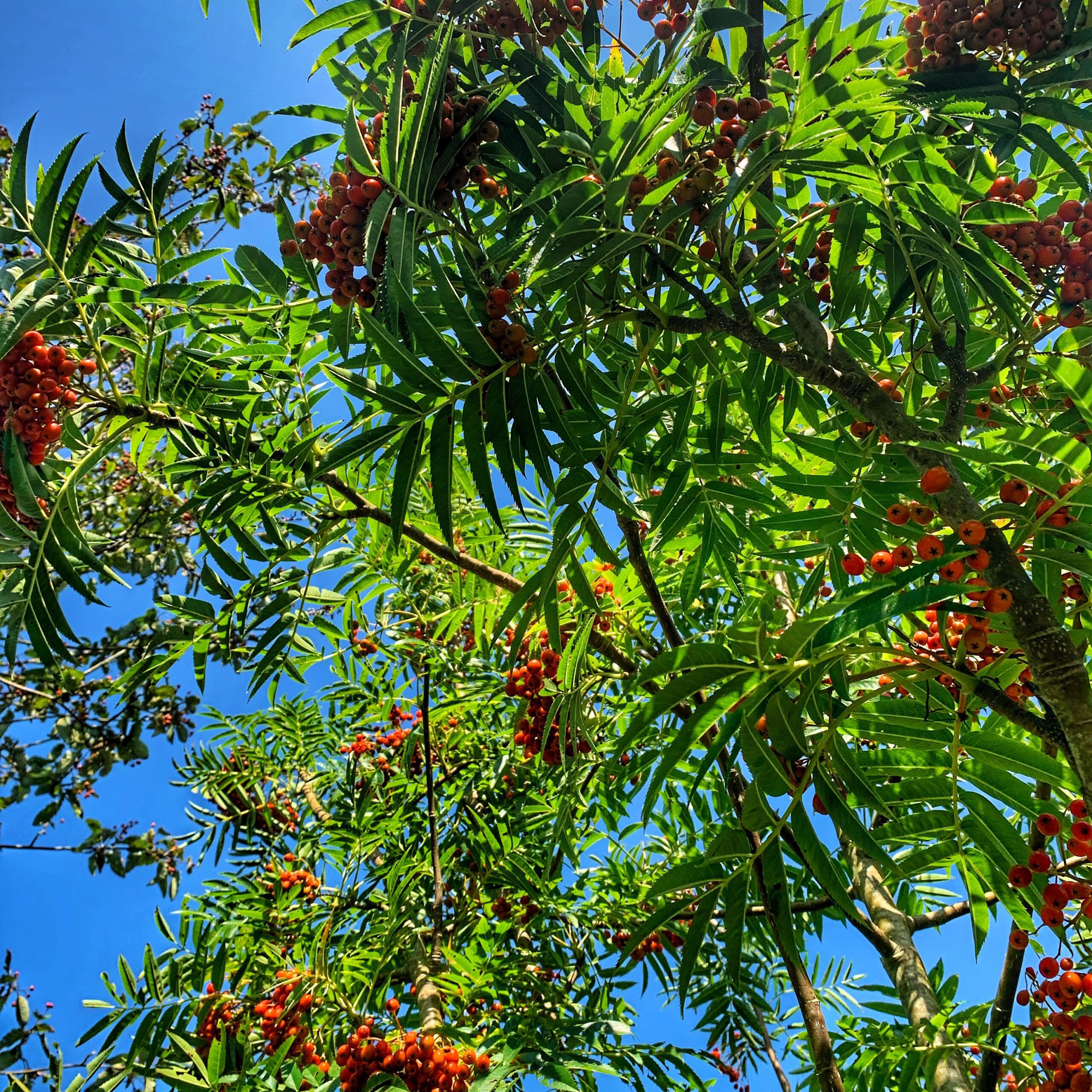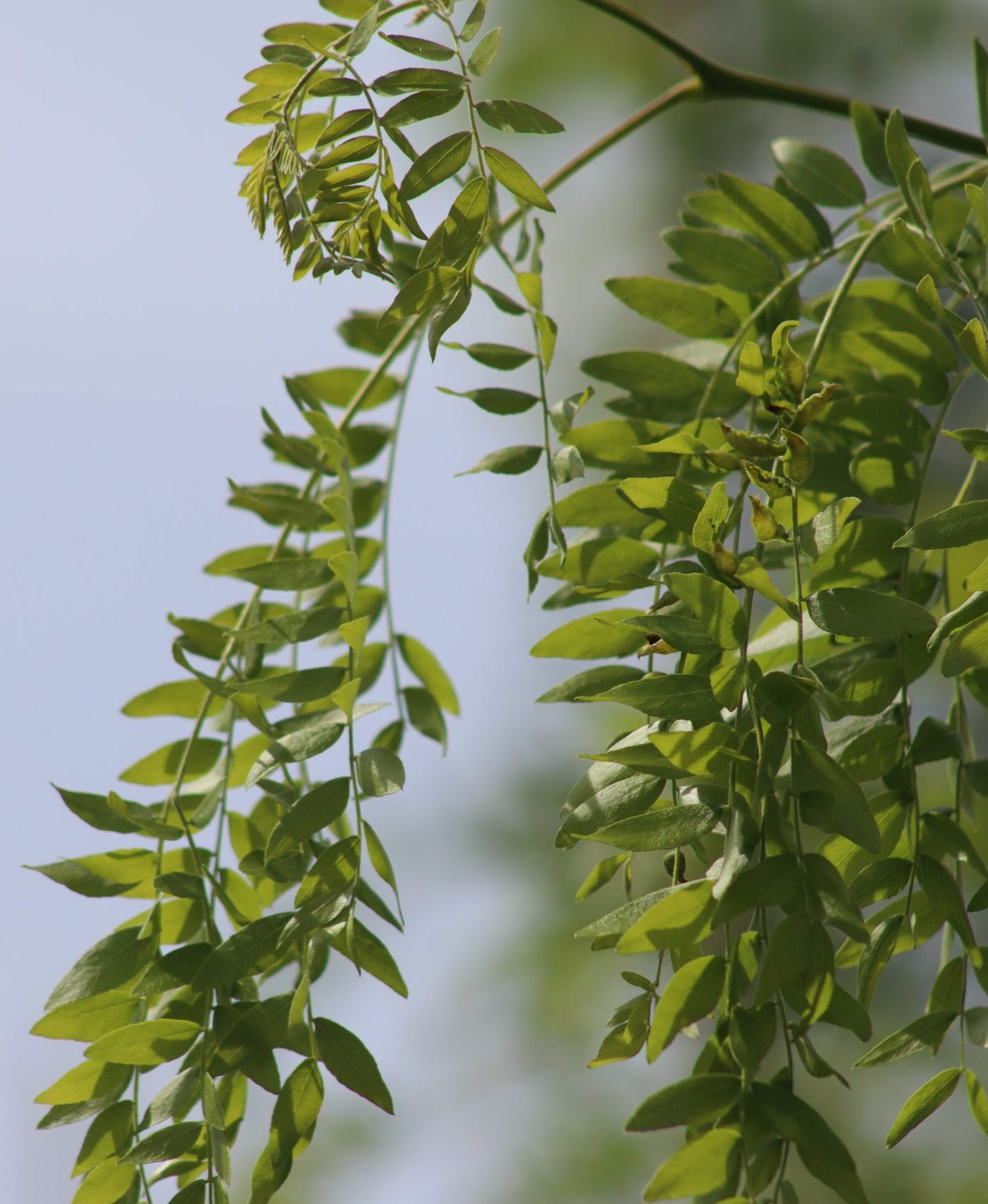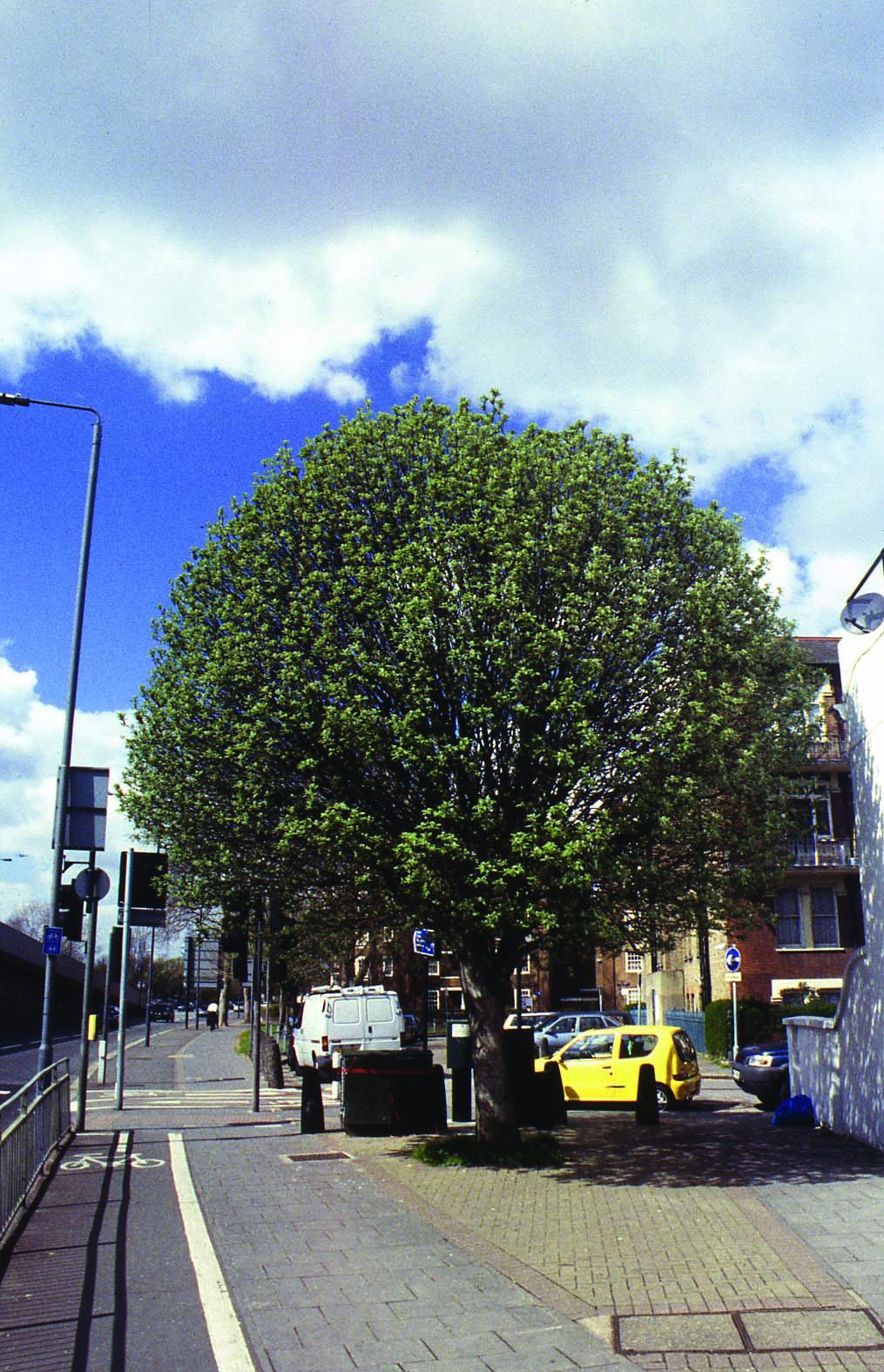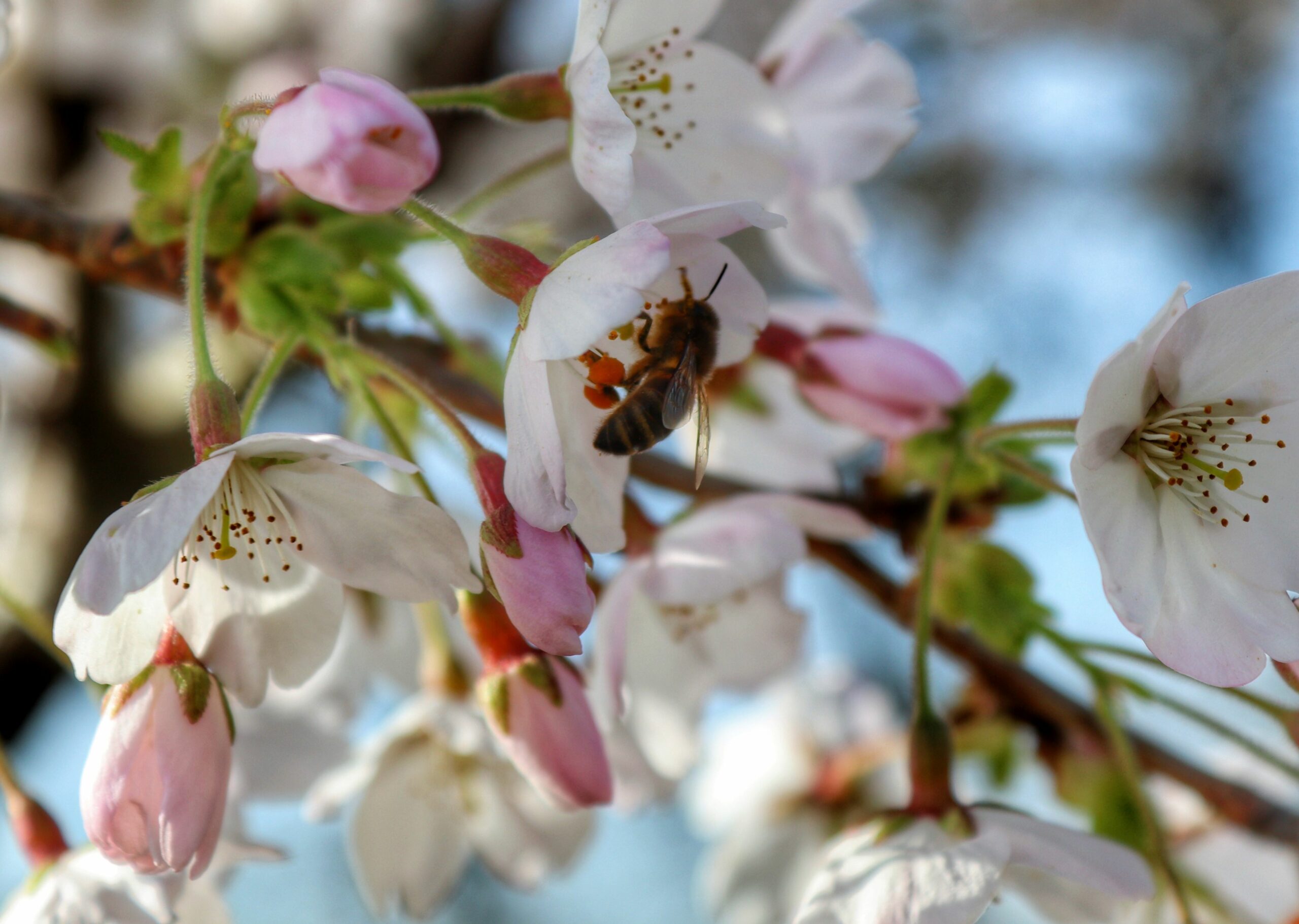Tree Information
Specialities
Tolerances
Wet Soil: Medium
Dry Soil: High
Lime: Medium
To truly appreciate some trees, one must pause and look up at their canopy. Beneath the canopy of this lesser-known tree, you’ll notice its green leaves with a gentle yellow underside, swaying gracefully in the breeze. The calming scent of minty wintergreen from the bark and shoots offer a sense of ambiance. In the past, oil of wintergreen was distilled from the wood.
One of its standout features is its rich golden autumn foliage. One year in our fields, rows of semi-mature Liquidambars stood behind a field of multi-stem Betula lenta. The contrast of the deep autumnal hue of the lenta against the vibrant neon of the Liquidambar was mesmerising, especially in the golden hues of the settling sun.
The longevity of the lenta is impressive. Most thrive for an average of 300 years. The most ancient lenta on record has surpassed a staggering 360 years. As it ages gracefully, its bark sheds in plates, revealing a deep, black, cherry like appearance.
Lenta finds its niche in parks and urban settings, especially in areas abundant with deer. Interestingly deer tend to avoid the young tree, making it an effective barrier to protect other susceptible trees from browsing deer.
Visit our Useful Resources for in-depth guides
Discover guides to help you with specifying your trees, caring for your trees and understanding the weights and dimensions of trees.
Useful ResourcesSize
Medium
9m high x 6m wide after 25 years
Environment
Ideal for planting in parks and urban environments. Consider planting in areas frequented by deer, as they typically bypass this young tree and serve as a protective shield for other, more vulnerable trees.
Foliage
Leaves display a vibrant green hue on top and a soft yellow underside, casting a gentle dappled shade. As autumn approaches, they transform into a stunning golden colour, and are celebrated for their captivating beauty.
Bark
In its youth, the bark showcases the smooth texture characteristic of the Betula. However, as it grows older, it darkens and develops vertical fissures, resembling that of a cherry tree. This has lead to its common name 'Cherry Birch'.
Resilience
Thrives in variety of well-drained soil types, including chalk and clay.
Make an Enquiry
Enquire below and speak to one of our expert team. For trades only, for general public enquiries click here.
Find Trees For Your Project
View Our TreesSpeak to a Member of Our Sales Team
Make an Enquiry
